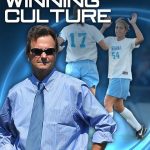One of the most critical decisions that a coach makes is simply which players should be on the field. Tactics are important but they are more effective with the right players on the field.
In the clip below Hall of Fame Coach Anson Dorrance, Women’s Soccer coach at the University of North Carolina shows one method for evaluating players. In the clip, he evaluates a players passing based on distance and accuracy on a scale of 1-3, while also evaluating the reception on a scale of 1-3. He explains the scoring criteria for both the pass and the reception.
For more information about the DVD that this clip came from clicking the link Anson Dorrance: Train Like a Champion
The YouTube video has sound, so please make sure that your sound is turned on and that you have access to the site












